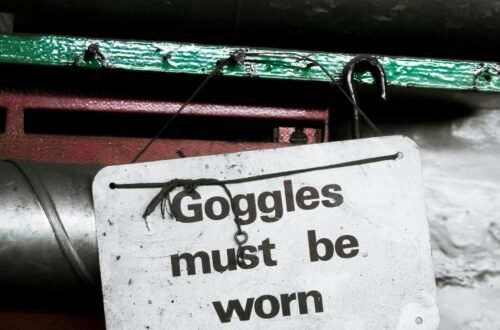Decoding Tire Sidewall for Safe Driving
Have you ever wondered what all those letters and numbers on the side of your tires mean? Understanding the information on your tire sidewall is crucial for ensuring your safety while driving. Let’s decode these markings together so you can drive with confidence and peace of mind.
Understanding Tire Size
When looking at your tire sidewall, you will notice a series of numbers and letters. The first step in decoding your tire sidewall is understanding the tire size. This information is crucial when it comes to choosing the right replacement tires and ensuring proper vehicle performance.
Your tire size will typically look something like this: P215/65R16. Let’s break it down:
- P: Indicates the tire’s type. In this case, it stands for “passenger” tire.
- 215: Represents the tire’s width in millimeters.
Understanding the sizing of your tires is essential for maintaining proper vehicle handling and performance.
Deciphering Load Index and Speed Rating
The load index and speed rating on your tire sidewall tell you how much weight your tire can carry and how fast it can safely travel. These ratings are crucial for ensuring the safety of your vehicle and its passengers.
The load index is a numerical code that corresponds to the maximum weight a tire can carry. The higher the number, the more weight the tire can safely support. For example, a tire with a load index of 95 can carry 1521 pounds.
The speed rating, on the other hand, indicates the maximum speed at which a tire can safely operate. This rating is represented by a letter, with “H” indicating a maximum speed of 130 mph.
By understanding your tire’s load index and speed rating, you can ensure that you are driving within safe limits and maintaining proper vehicle performance.
Reading Tire Construction
Another important aspect of decoding your tire sidewall is understanding its construction. This information tells you how the tire was made and what materials were used in its manufacturing process.
Tire construction is indicated by a letter on the sidewall. Here are some common construction types:
- R: Radial construction, which means the tire has layers of fabric running radially across the tire.
- D: Diagonal construction, where the layers of fabric crisscross diagonally.
Knowing the construction of your tire can help you understand its performance characteristics and make informed decisions when it comes to tire maintenance and replacement.
Identifying Tire Tread Wear
Checking your tire sidewall can also give you valuable information about your tire’s tread wear. By inspecting certain markings and indicators, you can assess the condition of your tires and determine if they need to be replaced.
Tire manufacturers often include tread wear indicators on the sidewall to help you determine when it’s time for new tires. These indicators are small bars that run across the tread grooves. If the tread wear indicators are level with the tire’s tread, it’s a sign that the tires are worn out and need to be replaced.
Regularly checking your tire sidewall for tread wear indicators can help you stay ahead of potential safety issues and ensure that your tires are in optimal condition for safe driving.
Understanding Tire Age
In addition to size, load index, speed rating, construction, and tread wear, your tire sidewall also provides information about its age. Understanding how to read the date of manufacture on your tires is crucial for maintaining their performance and safety.
The age of your tires is represented by a four-digit code on the sidewall. This code indicates the week and year the tire was manufactured. For example, a code of “2318” would mean the tire was produced in the 23rd week of 2018.
It’s essential to keep track of your tire’s age and replace them every 6 to 10 years, regardless of how much tread is left. Aging tires can be a safety hazard, as the rubber degrades over time and becomes more prone to failure.
Checking Tire Pressure Recommendations
Lastly, your tire sidewall will also provide information about the recommended tire pressure. Maintaining the correct tire pressure is crucial for your safety on the road, as underinflated or overinflated tires can lead to poor handling, decreased fuel efficiency, and even tire blowouts.
The recommended tire pressure for your vehicle can usually be found on a sticker inside the driver’s side door jamb or in your vehicle’s owner’s manual. However, if you can’t locate this information, your tire sidewall can also provide guidance.
Look for the section that indicates the maximum tire pressure for your tires. While this isn’t the ideal pressure for everyday driving, it can give you a reference point for ensuring your tires are properly inflated.
By regularly checking your tire pressure and referring to the recommendations on your tire sidewall, you can maintain proper vehicle handling, improve fuel efficiency, and extend the life of your tires.
Conclusion
Decoding your tire sidewall might seem daunting at first, but with a little guidance, you can easily understand the information it provides. By familiarizing yourself with tire size, load index, speed rating, construction, tread wear, age, and pressure recommendations, you can ensure that your tires are in optimal condition for safe driving.
Next time you’re inspecting your tires, take a moment to read the sidewall markings and use this information to make informed decisions about your tire maintenance and replacement needs. Safe driving starts with knowing your tires inside and out.





